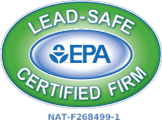Moving, whether into a new space or out of an old one, can be a daunting task. It requires careful planning, organization, and attention to detail to ensure a smooth transition for all parties involved. Whether you're a landlord, tenant, or property manager, mastering the art of move-in and move-out processes is essential for a successful and stress-free experience.
Clear Communication: Effective communication is the cornerstone of any successful move-in or move-out process. Landlords and property managers should communicate expectations, timelines, and responsibilities to tenants well in advance. Likewise, tenants should communicate any special requirements or concerns to their landlords to avoid misunderstandings later.
Thorough Documentation: Documenting the property's condition before and after a move is crucial for resolving disputes and ensuring accountability. Landlords should conduct a detailed inspection of the property, noting any existing damage or issues, and provide tenants with a copy of the inspection report. Similarly, tenants should document the property's condition upon move-in and notify the landlord of any discrepancies.
Checklists: Creating move-in and move-out checklists can help ensure nothing is overlooked. These checklists should include cleaning, repairs, key exchange, utility transfers, and other relevant responsibilities. A detailed checklist lets landlords and tenants stay organized and avoid last-minute surprises.
Professional Cleaning: A clean property sets the stage for a successful move-in or move-out experience. Landlords should ensure the property is thoroughly cleaned and in good condition, before new tenants move in. Likewise, outgoing tenants should leave the property in the same condition they found it, following any cleaning guidelines outlined in the lease agreement.
Coordination: Coordination is vital to a smooth move-in and move-out process. Landlords and property managers should coordinate with maintenance staff, cleaners, and other relevant parties to ensure the property is ready for occupancy. Similarly, tenants should coordinate with their landlords to schedule key exchanges, inspections, and other necessary tasks.
Respect and Consideration: Both landlords and tenants should approach the move-in and move-out process with respect and consideration for one another. Landlords should respect their tenants' time and privacy, while tenants should respect the property and any rules or regulations outlined in the lease agreement. By fostering a positive and respectful relationship, both parties can navigate the moving process more smoothly.
Follow-Up: After the move-in or move-out process is complete, following up with the other party is essential to ensure that everything goes smoothly. Landlords should check in with new tenants to address any questions or concerns, while outgoing tenants should confirm that their security deposit will be returned on time. By promptly addressing any issues, both parties can maintain a positive relationship.
In conclusion, successful move-in and move-out processes require careful planning, communication, and coordination. By following these tips, landlords, tenants, and property managers can ensure a smooth transition and a positive experience for all involved parties.












